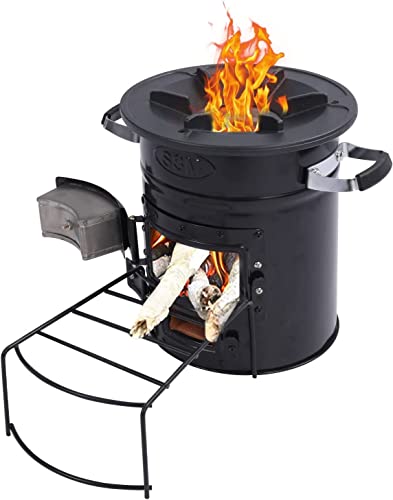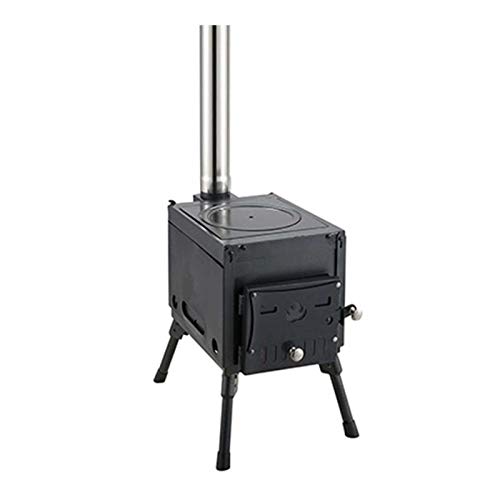The Best Woodburning Stove Tricks To Make A Difference In Your Life
페이지 정보

본문
 How to Properly Operate a Woodburning Stove
How to Properly Operate a Woodburning Stove Wood stoves can provide an inexpensive and cozy way to heat the home. Smoke from wood stoves can be harmful to your health. It is important to know how these appliances function and to operate them properly.
Wood stoves can provide an inexpensive and cozy way to heat the home. Smoke from wood stoves can be harmful to your health. It is important to know how these appliances function and to operate them properly.Modern stoves utilize secondary or catalytic combustion to control emissions. Older stoves and open flames emit large amounts of particulates.
The firebox
The firebox is the heart of any fireplace system. It's where you create a fire to heat your home and provide ambiance. It's a simple concept, but there are many important details that must be accounted for to keep your wood burning stoves on sale burning stove safe and efficient.
The most simple way to think about the firebox is that it's an open-air combustion chamber that has walls and an entrance. The majority of fireplaces have an already-built metal firebox or a masonry firebox. The type of box you choose depends on your preferences and the type of fireplace you own.
The majority of fireplaces that burn wood use a constant air flow to create the fire and burn fuel. Fresh air is drawn in through adjustable dampers that are located in the stove's doors. This allows the fuels to be burned correctly, and also reduces the toxic gasses that result from burning that is not complete or properly burned. The exhaust gases will be dragged up the chimney, and then safely away from your home.
Modern stoves that have catalytic secondary combustion make use of a specific catalyst that reburns the unburned gasses to create additional heat. This results in a much more clean and less polluting exhaust than traditional wood stoves that have no secondary combustion. Modern non-catalytic stoves are available, but they're typically less efficient than stoves with secondary combustion catalytically.
Some fireplaces with wood burning have backboilers, which can be used for space heating as well as water heating. These stoves are known as "hybrids" or "combination". They are in use since the beginning of the 20th century.
Wood burning stoves should only be burned with seasoned wood. Freshly cut (green) wood has a high moisture content, which can cause low flue temperatures and excessive creosote accumulation in the chimney. This can cause chimney fires, which could damage your stove and even be harmful to the health of your family.
If you're looking for a professional who can inspect your wood-burning stove or perform firebox repairs, ensure that the chimney professional you hire is certified by the CSIA certification and has reviews from customers on their website. It's also important to ask about their prices and the is the type of work they can do.
The pipe for ventilation
Ventilation is a must for wood stoves to eliminate fumes and keep the home healthy and warm. Venting helps eliminate carbon monoxide, nitrogen dioxide, and excess moisture from the combustion process. It also reduces the impact of heat loss and air pollution outside. Gas, wood and pellet stoves have different venting requirements to accommodate the ways they operate. It is essential to maintain the stove's venting systems on an every year to ensure safety and efficiency.
The ventilation system consists of the firebox as well as the ventilation pipe. The chimney and the vent pipe work together to create draft, which draws smoke from the stove through the fireplace to outside air. The differences in densities and temperature between the hot hottest wood stove smoke and cold outside air creates draft. The more hot the smoke, the more it is able to rise up the chimney and ventilation pipe.
The majority of modern wood stoves have been certified as low-emission units by the EPA. This means they emit less pollutants than older models, and contribute to global warming as well as other environmental concerns. The majority of modern stoves include pollution controls that limit the amount they emit while ensuring that the emissions are disposed of efficiently.
Older stoves that have open flues create a lot more carbon dioxide, a poisonous gas that must not be allowed to escape into your home. Carbon monoxide can be produced when the chimney is dirty or has inadequate ventilation. Installing carbon monoxide alarms in your home is therefore crucial.
Before installing a brand new or used wood burner stove for shed stove, measure the distance from where the stove sits on the floor to the chimney opening in the ceiling or wall. By multiplying this measurement by 2 will give you the minimum length of stovepipe that you require. Single-wall or double-wall stovepipes, and you must account for proper clearances from combustibles.
The stove's air vent must be adjusted when it first gets lit, until a good flame is created in the stove and the combustion process has stabilized. It is advised to avoid using wood based logs in the stove as they may contain volatile chemicals that can cause the air vents to malfunction.
The chimney
The chimney may not be something that homeowners give a lot of thought to, but it's actually a complex system that requires care and attention. The chimney is comprised of a variety of components that are essential to ensure the safety and efficiency of your stove.
The wood-burning stove's combustion gases are emitted to the outside through the firebox, the ventilation pipe, and the chimney. This is essential to lower carbon dioxide levels and to prevent harmful emissions. To accomplish this, the flue and chimney should be hot enough to allow the gases to exit the fireplace without cooling. This can be achieved by using a best indoor wood burning stove-burning fireplace that has a high heat output, and by adding new logs regularly to the fire.
Modern wood-burning stoves have a higher chimney than older models to enhance the drafting effect. However, this may be a disadvantage in the event that the size of your chimney is greater than the maximum permitted for your location. If this occurs, the chimney may compete with the house stack for draft, causing the gases to cool prior to exiting. This can restrict the flow of gases and lead to creosote buildup that could be a fire risk.
One of the most common errors that homeowners make is to open and close the door to the fireplace too often which can adversely affect the combustion. It is important to keep the fireplace door as tightly shut as you can, and only open it when you need to add ash or firewood. If you leave the door open for too long can allow the hot air to escape from the stove, which causes the logs to cool and more difficult to light. It releases volatile compounds that are not burned into the room.
Another mistake that many make is to use other kinds of combustibles inside their best woodburners woodburning stove [read this post from nagievonline.com] stove, which could cause more emissions or even a chimney fire. The fact is that woodburning stoves are designed and optimised to burn firewood, not other types of combustibles.
The flue
To ensure proper air flow for a woodburning stove, it requires a flue that is the right size. The flue should be at a minimum 25% larger than the stove pipe that connects the chimney and the stove to allow for sufficient smoke passage. A wood stove must be placed on a non-combustible hearth with a clear area in front of the fireplace opening.
Modern stoves are equipped with catalytic combustion systems that reduces the amount harmful byproducts that get released into the chimney. This feature can help increase the efficiency of wood stoves by burning a flame which produces more heat while releasing less pollution. However, using other kinds of combustibles like coal, can cause issues, including lower efficiency and higher emissions.
It is crucial to use seasoned or dry wood when burning wood in your fireplace or stove. If your wood is not seasoned or dry it will release high levels of creosote and water vapour into the chimney. This can cause low flue temperatures, and even a fire in the chimney.
Another way to avoid a chimney fire is to have a professional examine and clean your flue system on a regular basis. This includes the stovepipe, chimney and the chimney itself.
A soiled stove or flue system could cause a poor draft in your chimney, which can cause carbon monoxide build-up within your home. This could be hazardous to your family and you should not allow it to occur.
A good rule of thumb is to ensure that your stove and chimney are cleaned by a professional at least once a year. This will also help to keep your chimney and stove functioning efficiently.
- 이전글5 Killer Quora Answers On Electric Treadmill Vs Manual 24.11.08
- 다음글A brief Course In Cuckold Sex Stories 24.11.08
댓글목록
등록된 댓글이 없습니다.
